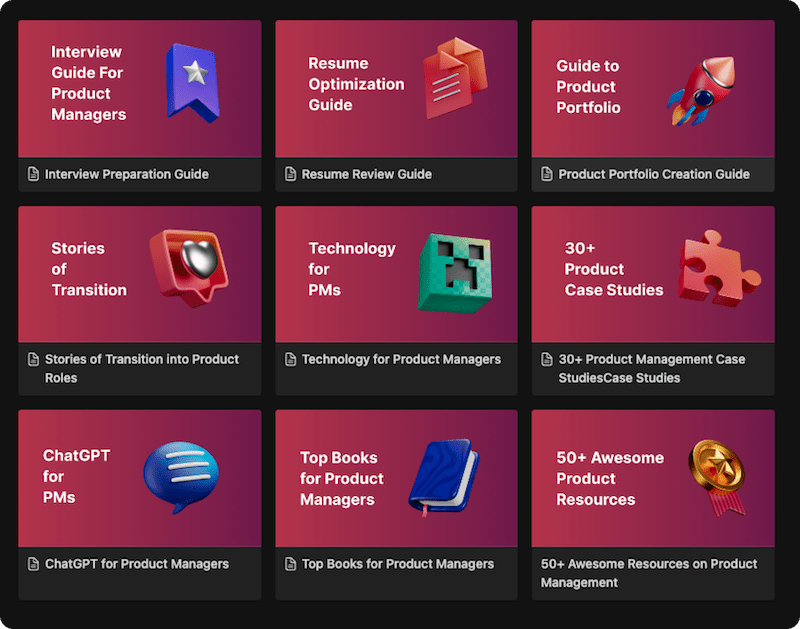Have you ever been in a sprint planning meeting where the engineering team is confused about what to build, the designers aren’t sure about the user flow, and stakeholders argue over priorities? This chaos often comes down to unclear requirements. That’s where User Stories come in. User Stories are one of the most powerful tools in Agile and product management. They take abstract requirements and translate them into simple, human-centered narratives that focus on the user’s perspective.
This guide will take you from a novice to an expert in the art and science of User Stories. We will demystify this fundamental Agile practice, breaking down what they are, why they are so powerful, and how to write them effectively. You will learn the classic “role-goal-benefit” format, the INVEST criteria for quality, and how stories fit into the larger picture of your Product Backlog and Sprint Planning. By the end, you’ll be equipped to use user stories to foster collaboration, maintain a relentless focus on user value, and ship products that truly solve problems.
Definition & Origin: A Shift from Requirements to Conversations
The concept of User Stories emerged from Extreme Programming (XP) in the late 1990s. The term is widely attributed to Kent Beck, one of the original signatories of the Agile Manifesto. However, it was Ron Jeffries, another co-founder of XP, who popularized the simple “Three Cs” formula to describe their lifecycle: Card, Conversation, and Confirmation.
The goal was to move away from the massive, static requirements documents that were common in traditional Waterfall development. These documents were time-consuming to create, quickly became outdated, and often failed to create a shared understanding. User stories, in contrast, were designed to be lightweight and to serve as a promise for a future conversation. They are deliberately kept brief to encourage ongoing dialogue between the development team, the Product Owner, and the user.
Benefits & Use-Cases: The Power of the Story
For a product manager or Product Owner, adopting user stories brings immense benefits to the development process.
- Keeps the Focus on the User: The “As a…” format constantly reminds the team who they are building for and why it matters to them. This helps prevent the team from becoming a Feature Factory.
- Fosters Collaboration: User stories are conversation starters. They invite questions and collaboration between developers, designers, testers, and the product owner, leading to a more shared understanding.
- Enables Incremental Development: By breaking down large initiatives (Epics) into small, manageable stories, teams can deliver value in small increments, get feedback faster, and adapt to change more easily. This is the heart of Lean Development.
- Promotes Creative Solutions: Because stories define the user’s goal rather than a rigid technical solution, they empower the development team to use their expertise to find the best way to meet that need.
- Simplifies Prioritization: Small, independent stories are easier to estimate and prioritize. This allows the product owner to sequence the Product Backlog to maximize value delivery in each sprint.
How It Works: A Step-by-Step Guide to Writing and Using User Stories
Mastering user stories involves understanding their structure, their lifecycle, and the criteria that make them effective.
Step 1: The Standard Format (The “Role-Goal-Benefit” Template)
The most widely recognized format for a user story is:
As a
<type of user>, I want to<perform some action>, so that<I can achieve some goal/benefit>.
- As a
<user>: This part identifies the User Persona who will benefit from the feature. It answers “Who are we building this for?” - I want to
<action>: This describes the user’s intent or what they want to do. It answers “What do they want?” - So that
<benefit>: This is the most crucial part. It explains the user’s motivation and the value they will get from the feature. It answers “Why do they want it?”
Step 2: The 3 Cs (Card, Conversation, Confirmation)
This framework, proposed by Ron Jeffries, describes the lifecycle of a user story.
- Card: The story is written on a physical card or in a digital tool (like Jira or Trello). This card contains just enough text to identify the requirement. It is not the full specification.
- Conversation: The details behind the story are fleshed out through conversations between the development team, the product owner, and other Stakeholders. This is where questions are asked, assumptions are challenged, and a shared understanding is built.
- Confirmation: The acceptance criteria are defined. This is a list of conditions the feature must meet to be considered “done.” It confirms that the story has been implemented correctly and delivers the intended value.
Step 3: Defining Acceptance Criteria
Acceptance Criteria are the “definition of done” for a user story. They are a set of testable conditions that must be met. They remove ambiguity and ensure the team knows exactly what to build.
- Example Story: “As a shopper, I want to save items to a wishlist so that I can easily find them later.”
- Example Acceptance Criteria:
- Given I am on a product page, I can click a “Save to Wishlist” button.
- When I click the button, the item is added to my wishlist.
- I can view my wishlist from my account page.
- I can remove an item from my wishlist.
Step 4: The INVEST Mnemonic for High-Quality Stories
Coined by Bill Wake, the INVEST mnemonic helps you write stories that are ready for a sprint.
- Independent: The story should be self-contained and not dependent on other stories.
- Negotiable: It’s not a rigid contract. The details should be open to negotiation during the “Conversation” phase.
- Valuable: It must deliver clear value to the user (and the business).
- Estimable: The team should be able to estimate the effort required to implement it.
- Small: It should be small enough to be completed within a single sprint.
- Testable: The acceptance criteria should be clear enough that the story can be tested.
Mistakes to Avoid: Common User Story Pitfalls
- Writing Technical Tasks as Stories: A story like “As a developer, I want to upgrade the database” is not a user story because it provides no value to the end-user.
- Being Too Vague: A story without clear acceptance criteria is a recipe for misunderstanding.
- Being Too Prescriptive: A story that dictates the technical solution (e.g., “add a dropdown menu”) stifles the creativity of the development team. Focus on the “what” and “why,” not the “how.”
- Forgetting the “So That” Clause: The benefit is the most important part of the story. Skipping it means you lose sight of the value you’re trying to create.
- Writing the Story and Walking Away: Remember, the story is a placeholder for a conversation. Don’t just write it and assign it; discuss it with the team.
Examples / Case Studies: From Epic to Stories
Let’s break down a large feature (an Epic) into smaller user stories for an e-commerce website.
Epic: User Profile Management
- Story 1 (Editing Profile):
- As a registered customer, I want to edit my profile information, so that I can keep my personal details up to date.
- Acceptance Criteria:
- I can navigate to an “Edit Profile” page.
- I can change my name, email, and password.
- I receive a confirmation message when the changes are saved.
- Story 2 (Viewing Order History):
- As a registered customer, I want to view my past order history, so that I can track my purchases and reorder items.
- Acceptance Criteria:
- I can see a list of all my past orders.
- Each order shows the date, order number, total price, and status.
- I can click on an order to see the full details.
- Story 3 (Managing Shipping Addresses):
- As a frequent shopper, I want to save multiple shipping addresses, so that I can quickly check out without re-entering my information.
- Acceptance Criteria:
- I can add a new address to my account.
- I can edit an existing address.
- I can set a default shipping address.
Related Concepts & Comparisons
User Stories vs. Use Cases vs. Requirements
These terms describe different ways of capturing what a system should do.
- Technical Requirements: These are highly detailed, formal specifications of how a system must function (e.g., “The system shall encrypt the password using SHA-256”). They are focused on the system, not the user.
- Use Cases: These are more detailed than user stories and describe the step-by-step interaction between a user (the “actor”) and the system to achieve a goal. They often include diagrams and multiple paths (e.g., “happy path,” “alternative paths”).
- User Stories: These are the most lightweight and informal. They focus on the user’s goal and motivation and are designed to facilitate conversation rather than provide exhaustive documentation.
Conclusion
In modern, Agile product development, User Stories are the fundamental currency of collaboration and value delivery. They are the antidote to the Feature Factory, constantly pulling the team’s focus back to the human beings they are building for. By shifting the conversation from “what to build” to “why we’re building it,” user stories empower teams to make smarter decisions, innovate on solutions, and maintain a direct line of sight between their daily work and the customer’s success. Mastering the art of the user story is not about memorizing a template; it’s about embracing a mindset of empathy and continuous conversation.
As a product manager, making well-crafted user stories the foundation of your Product Backlog will fundamentally change your team’s dynamic. It will break down silos, reduce ambiguity, and replace rigid handoffs with a fluid, collaborative partnership. By telling the story of your user’s needs, you invite your team to become co-authors in the solution. This shared ownership is the engine of high-performing teams and the blueprint for building products that don’t just meet requirements but are genuinely loved by users.
FAQ’s
While the Product Owner or product manager is ultimately responsible for the Product Backlog and therefore the stories in it, anyone on the team can write a user story. It’s a collaborative process.
They represent a hierarchy of work. An Epic is a large body of work that can be broken down into multiple stories (e.g., “Launch a new mobile app”). A User Story is a single feature within that epic (e.g., “As a user, I want to log in with my fingerprint”). A Task is a specific piece of work the development team needs to do to complete a story (e.g., “Create login button,” “Set up fingerprint API”).
Teams often use a relative estimation technique called “Story Points” during Backlog Grooming
or Sprint Planning. Instead of estimating hours, they assign points (often using the Fibonacci sequence: 1, 2, 3, 5, 8…) based on the effort, complexity, and uncertainty involved.
Yes. While most stories focus on user-facing features, you can also write stories for things like performance, security, or technical debt. For example: “As a user, I want the dashboard to load in under 2 seconds, so that I don’t get frustrated and leave.”
Learn better with active recall quiz
How well do you know What Are User Stories? Let’s find out with this quick quiz! (just 10 questions)


